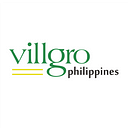Queer Enough: Reflections on Pride
This Pride Month Denise Dalusong takes a look at the challenges of being Queer and the struggle to make sense of it all. She shares her own personal dilemmas, the Queer Impostor Syndrome that plagues so many, what Pride Month means to the community, and what can be done to support them.
“Am I queer enough?”
I think anyone who’s struggled with their gender identity at one point or another has asked themselves this question. I surely have. As a straight-presenting bisexual woman in the Philippines, I’ve checked myself countless times to see if I was actually queer or just having a girl crush, no homo.
Queer impostor syndrome is something many queer people experience, especially those who’ve lived the majority of their youth identifying as straight or identifying otherwise but were closeted. It’s fairly common for newly-out individuals to have feelings of self-doubt or being a fraud, and feelings of disconnection with the larger community. This is because “baby gays” sometimes do not have a sexual/ dating history or feel like they haven’t done enough to warrant joining the community, even if that in itself is ridiculous. The queer community doesn’t operate with a checklist for member acceptance.
There’s no right or wrong way to be queer. Queerness refers to one’s sexual and gender identity and expression, and how they may deviate from societal norms like cisgender-ness, allosexuality, and heterosexuality. Anyone can choose to identify as part of the LGBTQIA+ umbrella or can utilize the queer identity to refer to certain aspects of their selves. People can be in “straight” relationships and still be called queer so they choose to be. I had never been in a relationship with a woman before coming out, and yet I felt like I was in the perfect position to grow into my queer identity. I mean, if people can assume straightness for young people who’ve never been in any relationship then why can’t I do the same about my queerness?
There’s no one explanation for being queer, except that it’s only confirmed by the person assuming queerness; some people don’t even want to use the term “queer” when referring to their identities, and that’s 100% OK. Does this mean that you can present as hyper-feminine and act aromantic, and still identify as a lesbian? Yes, it means exactly that.
Gender is fluid — it’s alright to change your mind. A lot of people tend to criticize and be criticized for the ways they came out. In an effort to make sense of something that doesn’t fit standard rhetoric, society tends to force queer people into deciding what type of queer they are. The thing is, one’s journey toward accepting their queer identity is vastly different from another’s. Some people know they’re gay very early on in their childhoods, while some struggle to live their queerness until much later in their adulthoods. Some people initially come out as gay only to announce to the world that they are trans and straight during a Pride event. I came out as bisexual when I was 20 in a dingy college bar with 2 queer friends. And while I still identify as such, I definitely have a different understanding of my gender identity from my youth versus my appreciation for it now.
The truth of the matter is, people have the agency to identify as any gender as they see fit at any point in their lives. We can’t dictate how a queer person sees themselves and how they want to identify — our only responsibility is to support spaces and initiatives that make it so the LGBTQIA+ community is readily accepted and celebrated.
There are ways to feel more connected to your queerness. Participating in queer-led activities and consuming content from the queer community helps in curbing queer imposter syndrome. There’s power in connecting with queer media and supporting initiatives for the community, and by the community. So read books from queer authors, watch queer content, follow queer influencers on Instagram — engage with the community that affirms and embraces your queerness. Not everyone will find comfort in gay bars or Pride parades or Lady Gaga, but hopefully, everyone can find their own little safe space in other avenues for queer celebration. I love watching and supporting local drag shows, even if I would never perform drag.
Queerness and true allyship don’t end in Pride Month. It’s not as if the identities, experiences, and struggles of the LGBTQIA+ community cease to exist the minute July rolls around. In fact, the work only begins in June and continues until there’s an effective change for the community. Your gender identity — while possibly enriched by a coming out process and a sense of belonging with the LGBTQIA+ community — is something you’ll continuously nurture and support, no matter how you present yourself. You can choose to celebrate your queerness during Pride Month in the same way you can celebrate your identity any day moving forward.
This Pride Month, I challenge myself and everyone around me to embrace their queerness and allyship, no matter the form. If you say you’re queer, then you are. Being yourself is already queer enough.
About the Author
Denise Dalusong is the Program Manager (Gender & Inclusion) at Villgro Philippines. A passionate advocate for gender equity, Denise’s work revolves around creating opportunities, connections, and safe spaces for all genders to successfully navigate their businesses and thrive.
Connect with Denise at denise@villgrophilippines.org
